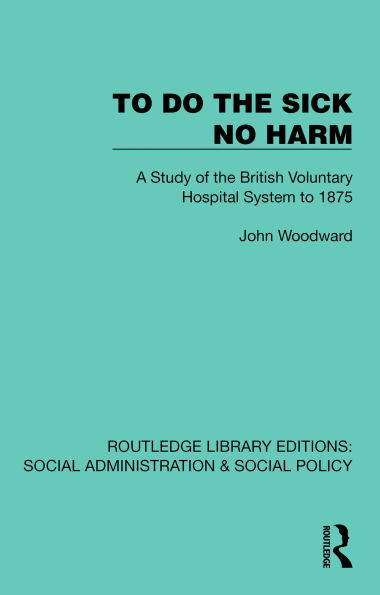What part did the British voluntary hospital system play in the health of the community in the eighteenth and nineteenth centuries? Did hospitals kill or cure? Originally published in 1974, this study investigates these questions through a pioneering examination of the extant hospital records, ranging from admissions registers to annual reports, and by an analysis of the contemporary literature. It relates the hospital system to the changing economic and social environment and is primarily concerned with the patients themselves and their experiences. The lack of medical treatment for the bulk of the population is emphasised, and the influence of the reformers on the foundation of the first voluntary hospitals in the beginning of the 18th century is assessed. Staffing and administrative procedures are studied as a prelude to examining the patients – their social background and physical and surgical complaints. Important aspects of the hospitals’ work and their influence on the rate of mortality are explored. They are admissions policy regarding fever cases; the nature and number of surgical cases and the incidence of sepsis. The effect of growing urbanization and industrialization on the success of the voluntary hospitals in the 19th century is also examined.
What part did the British voluntary hospital system play in the health of the community in the eighteenth and nineteenth centuries? Did hospitals kill or cure? Originally published in 1974, this study investigates these questions through a pioneering examination of the extant hospital records, ranging from admissions registers to annual reports, and by an analysis of the contemporary literature. It relates the hospital system to the changing economic and social environment and is primarily concerned with the patients themselves and their experiences. The lack of medical treatment for the bulk of the population is emphasised, and the influence of the reformers on the foundation of the first voluntary hospitals in the beginning of the 18th century is assessed. Staffing and administrative procedures are studied as a prelude to examining the patients – their social background and physical and surgical complaints. Important aspects of the hospitals’ work and their influence on the rate of mortality are explored. They are admissions policy regarding fever cases; the nature and number of surgical cases and the incidence of sepsis. The effect of growing urbanization and industrialization on the success of the voluntary hospitals in the 19th century is also examined.

To Do The Sick No Harm: A Study of the British Voluntary Hospital System to 1875
236
To Do The Sick No Harm: A Study of the British Voluntary Hospital System to 1875
236Related collections and offers

Product Details
| ISBN-13: | 9781040388556 |
|---|---|
| Publisher: | Taylor & Francis |
| Publication date: | 07/15/2025 |
| Series: | Routledge Library Editions: Social Administration & Social Policy |
| Sold by: | Barnes & Noble |
| Format: | eBook |
| Pages: | 236 |
| File size: | 488 KB |
